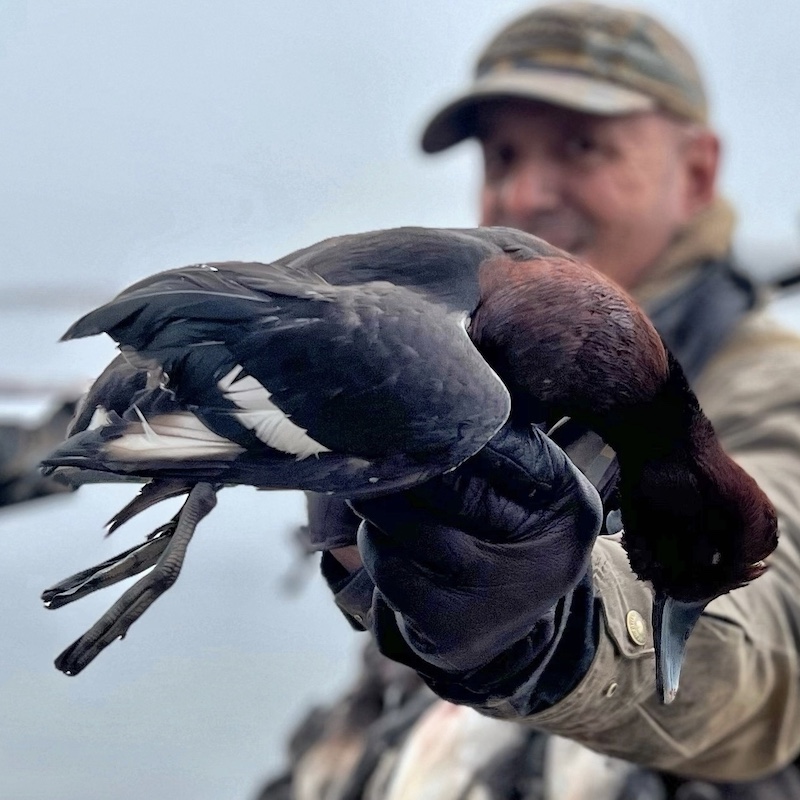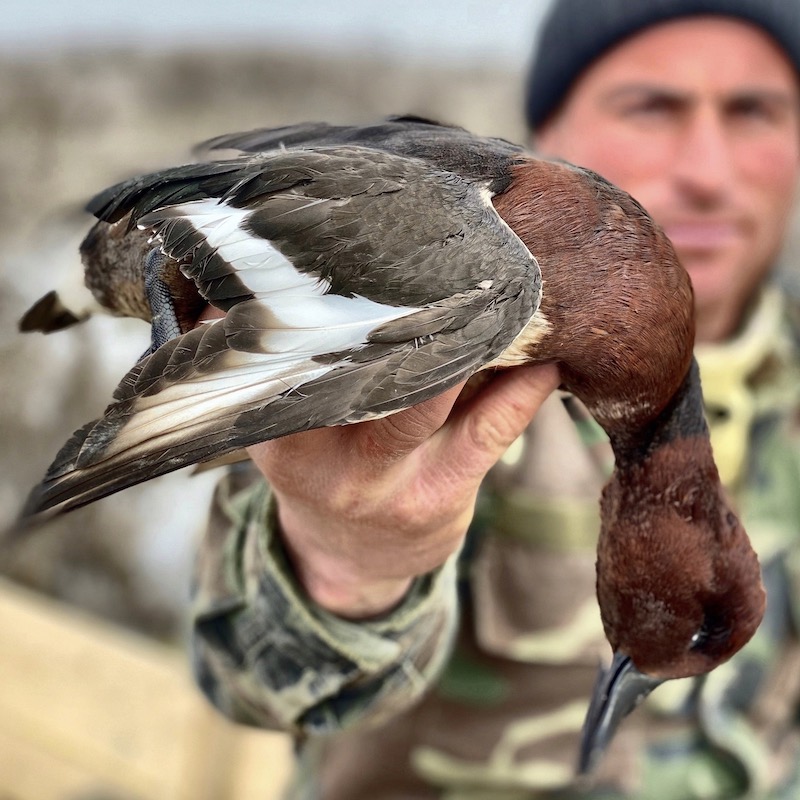Ferruginous Pochard
Ferruginous Pochard (Aythya nyroca), also commonly known as the Ferruginous Duck, Common White-eye, or White-eyed Pochard, is a shy species of waterfowl found in Euro Siberia. As a couple of their common names suggest, this species has bright white irises that contrast highly with their rusty head plumage. This same plumage extends down their chest and becomes paler and browner on the sides. They display a gray-black bill that slopes gently from their face. Ferruginous Pochard underbelly and under the tail are both white, as well as the underside of their wings that can only be seen in flight. The underside of the wings is completely white with gray edging, while the top of the wings only has white primaries and secondaries that are tipped with gray. Females are distinguished by their paler plumage and dark irises.
The Ferruginous Pochard population is more likely to be migratory rather than residents, though there are residents found in small pockets of Saudi Arabia, France, Switzerland, and a few other nations. Common breeding areas for this species spans from Iberia to western Mongolia, and into Arabia. The majority of the western wintering population is found around the Black Sea, while the eastern wintering population migrates to south and southeast Asia. While known as a “shy” species, Ferruginous Pochards are neither gregarious nor non-gregarious. Wintering periods are when the largest flocks of this species can be observed. Ferruginous Pochard can also be found in flocks with Tufted Ducks and Common Pochards. During the breeding season they prefer to nest near colonies of gulls for protection. While associating themselves with other species and conspecifics, they are not normally overtly social with them.
FERRUGINOUS POCHARD. At a glance, it looks like the cinnamon teal of divers. It’s put together beautifully. On adult drakes, the head, chest and flanks are deeply chestnut. It has a pale yellow eye. Underbelly and undertail coverts are pure white, and it has prominent white wing bars. A patch of dark chocolate on its back extends up the neck and forms a handsome collar. Females and juveniles are far more plain. But mostly what you see from the blind – an individual streaking blur of small-sized, brownish-colored pochard hauling ass at the speed of sound over your decoys! They remind me of the Australian hardhead that’s among the same genus but located about 7-thousand miles away. Maybe it’s the light-colored eye. They’re notably relatively solitary species; the dozen and a half I’ve ever seen were flying solo, and they were all in Azerbaijan. They’re not as conspicuous as the red-crested pochard, but I consider them one of the big Eurasian prizes. There are 12 Aythya species worldwide. I’ve been fortunate to take the nine that are neither critically endangered nor otherwise protected.

Available Hunts
Ferruginous Pochard are medium-sized diving ducks that prefer to forage in freshwater with dense areas of terrestrial and aquatic vegetation for cover. Ferruginous Pochard will also use saline and brackish water bodies, especially during migrations and wintering periods. This species will feed nocturnally, both diving and dabbling, in search of aquatic plants, mollusks, insects, and small fish. One conservation issue that this species faces is the introduction of grass carp to their foraging areas, leaving them with little aquatic plants left to consume.
FERRUGINOUS FUN. Foggy. Visibility less than forty yards. Heard before seen, wings slicing air, quacks and chatters. Then magically appearing inside the fishbowl sphere of visibility. Snap shooting. Felled birds splashing the water, the remainder disappearing like a magic act. Erratic-flying eurasian green-winged flocks mostly, a few floating gadwall pairs, but enough red rockets keeping me on my toes. Ferruginous pochard prizes. Think cinnamon-colored lesser scaup. Zip, entering then departing the fog-induced fishbowl more quickly than I could react. The fog lifting slightly before things got serious. Singles, pairs, dozen-bird flocks. In past visits, I’d tallied 3 ferruginous pochards total. This foggy morning s real treat. A 4-packof ferruginous pochards strafed the decoys, hastily disappearing when hearing the growling pochard calls, circling back, leaving a 2-for-1 double in the decoys. Came a single ferruginous pochard that passed through several times already, the last time was the charm. Another handsome ferruginous drake plucked from a pair before the boat paddled to pick me up. Drake ferruginous pochards, dark chestnut wings and backs, cinnamon heads, dark neck collars, faintly yellow “white eyes.” White undertail coverts, bellies and underwings. Striking in flight, dark forewings contrasting with seemingly all white primaries and secondaries. Fast wingbeats delivering ferruginous pochards quickly through the air. A real prize. Chasing unicorns is tough. A few hard-earned prizes help. That and vodka shots.




















